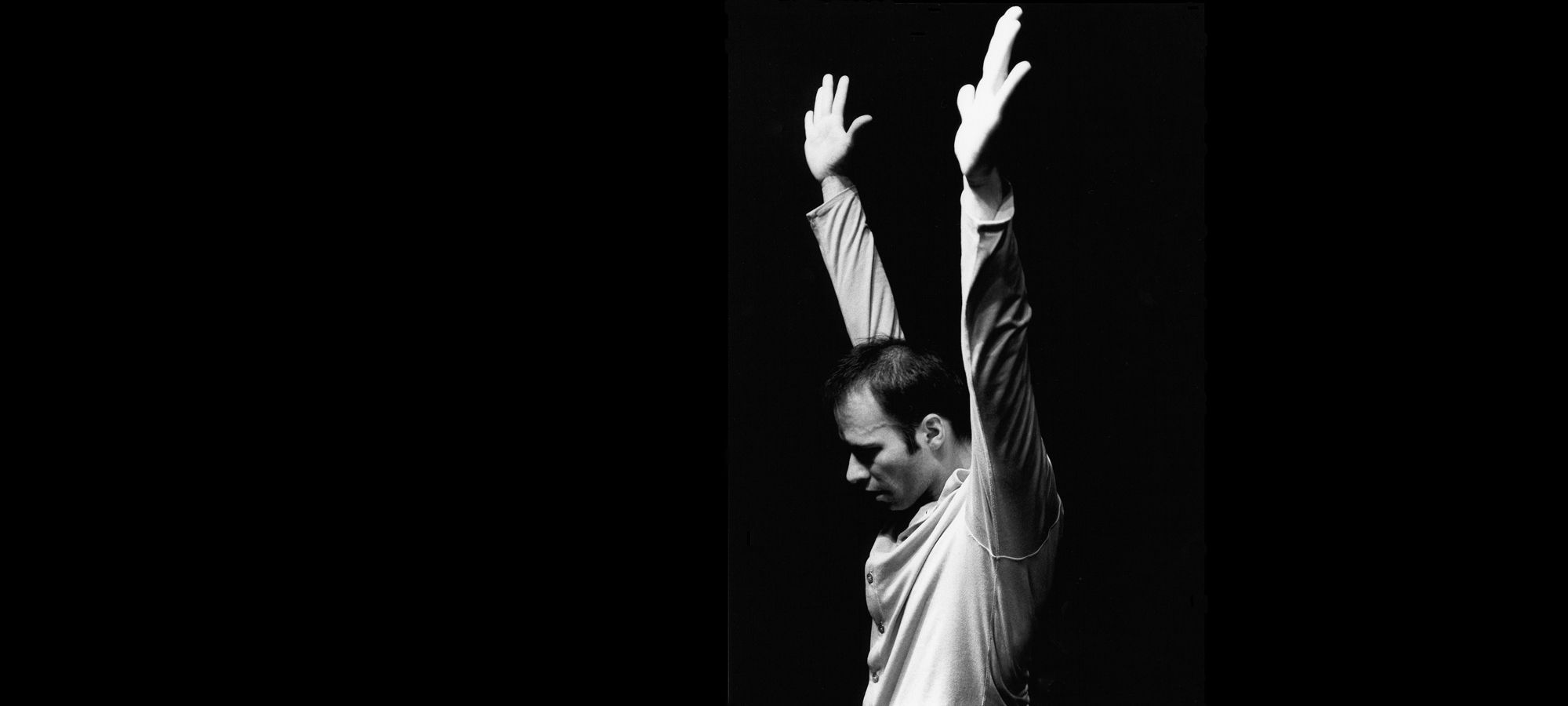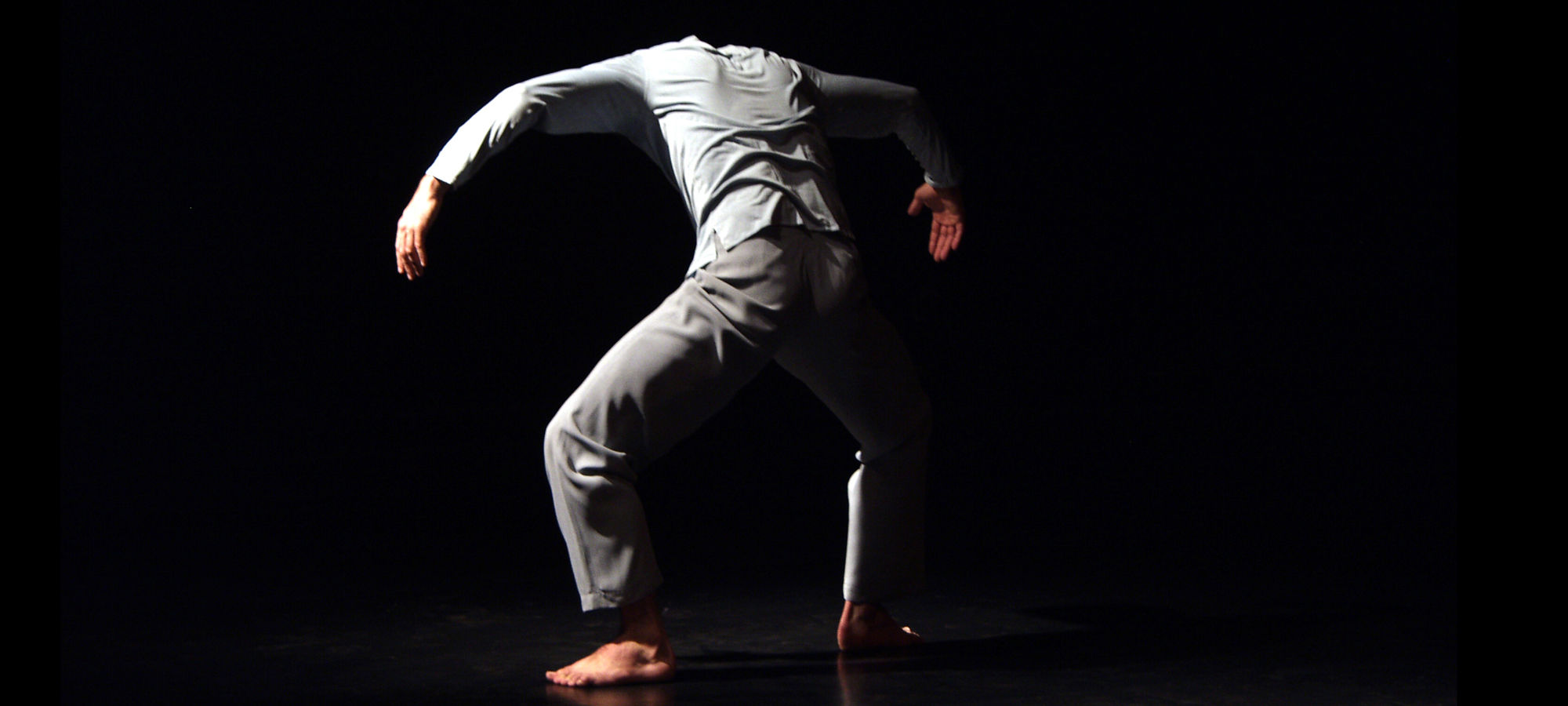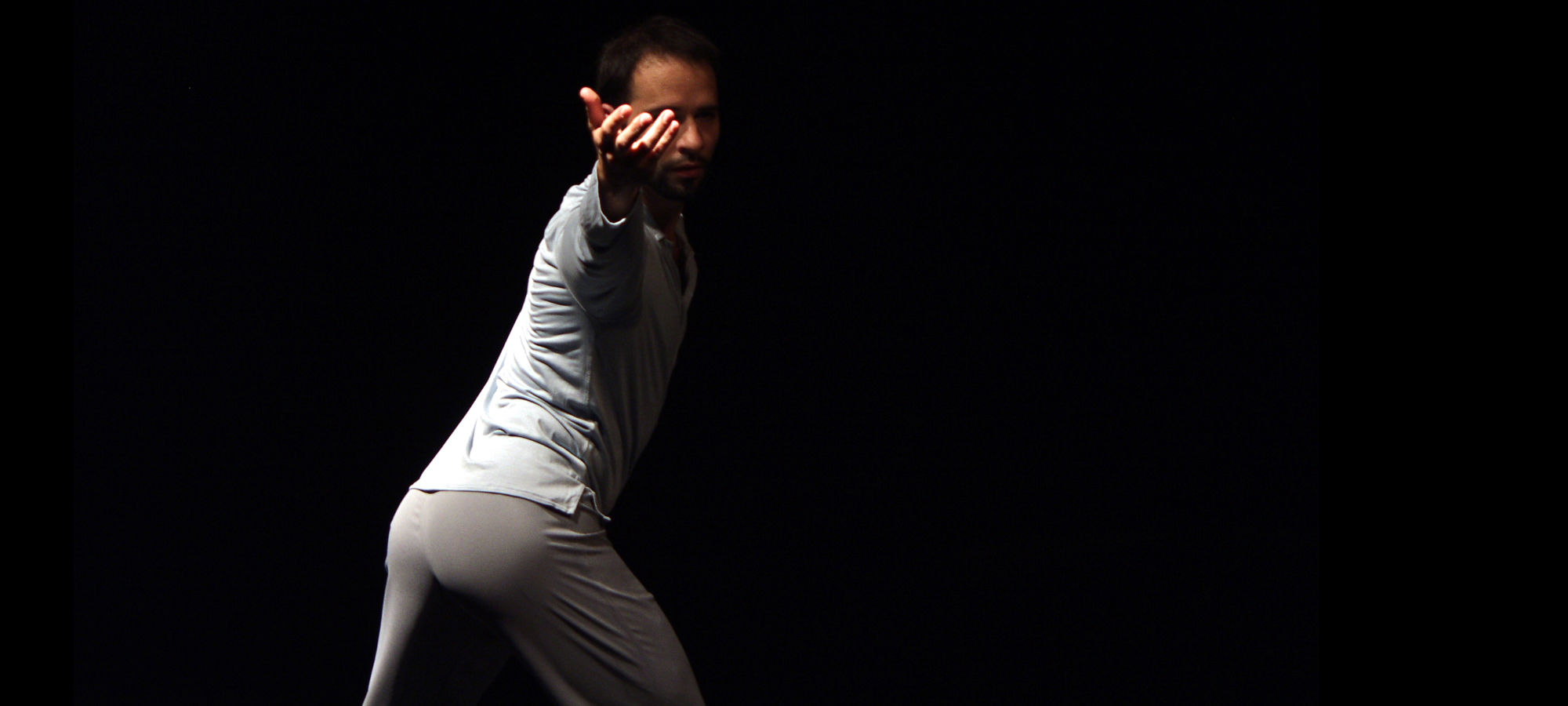
Cadena
I look for you, I give myself to you, I lose you, I am... I’m on one side of the river and you’re on the other. My voice reaches you through the river’s waters.
This polished dance by Michel Kelemenis is set against the polymorphous and action-packed music by Philippe Fénelon. Dancing Cadenza is experienced as a playful conflict, a struggle for power where every dancer’s action modulates the relationship between the dance and the always-identical flow of recorded music. This forces the dancers to listen carefully and to be constantly attentive to the manifold encounters designed by the choreographer to never be redundant, so that the dialogue between the two modes of expression always remains a dialogue.
This conflict nourishes the commitment of the interpreters who choose to perform rather than submit. Relaxing afterward, they display their solitude by inventing one last dance, the most modest.
Echos
Danser Jacky Pailley
may.2002
Michel Kelemenis is a choreographer who knows how to work intelligently with music in complete simplicity. His latest creation is a solo written to music by Philippe Fénelon. The fruits of this first collaboration were presented at the Festival Rebonds in Albi for the closing ceremonies. On music consisting of four distinct parts, each based on a solo instrument, Kelemenis weaves a long, virtuoso monologue in a maze of rich textures.(…) On a Tamil song, at the end of the score, he takes the microphone to recite a translation of the song in a last poetic impulse.
Libération Marie-Christine Vernay
march.2002
Cadenza can be considered as a dialogue between soloists, between a choreographer and a composer, between a solo dance and solo instruments :
harpsichord, percussion, double bass and voice. (…) The relationship between music and dance is established with intelligence, without redundancy or indifference, up to the strange, final song that is like an embrace, which doesn’t close the show but instead opens it up to an unknown voice.




